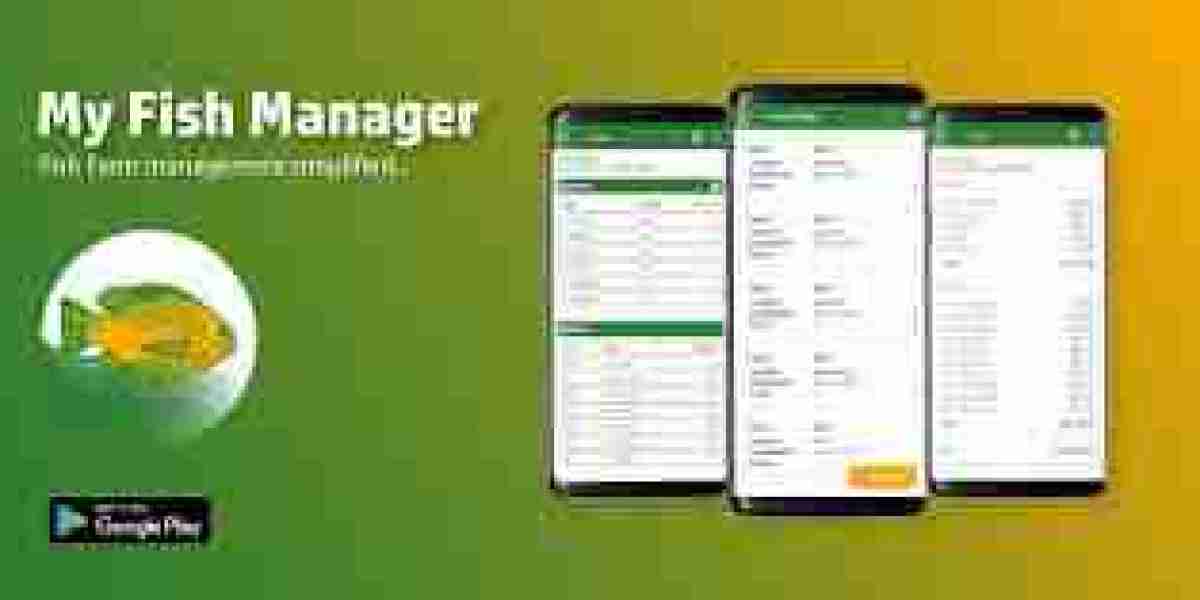In the age of digital transformation, even age-old practices like aquaculture are embracing smart technologies. One of the most powerful innovations shaping modern aquaculture is fish farm management software. Whether you're running a small family-run hatchery or a large-scale commercial aquaculture operation, fish farm management can be a game-changer for improving productivity, sustainability, and profitability.
In this blog, we’ll dive deep into what fish farm management software is, how it works, its key features, benefits, challenges, real-world applications, and how to choose the right one for your fish farming business in 2025.
What is Fish Farm Management Software?
Fish farm management is a specialized digital tool designed to monitor, automate, and optimize all operational aspects of a fish farming business. It serves as a central hub where aquaculture operators can track fish health, growth rates, feeding schedules, water quality, inventory, sales, finances, and compliance records — all from a single platform.
These systems are often cloud-based, offering real-time updates, mobile access, and integrations with IoT sensors, GPS systems, water quality probes, and accounting software.
Why Fish Farming Needs Digital Management Tools
According to the Food and Agriculture Organization (FAO), global aquaculture production reached 128 million tonnes in 2021, and demand is expected to rise steadily through 2030. With such growth, operational inefficiencies, disease outbreaks, and environmental challenges can severely impact business outcomes.
This is where fish farm management shines — by giving farmers actionable insights and data-driven tools to improve decision-making and reduce risks.
Key Features
Inventory and Stock Management
Monitor fish stock by species, lifecycle stage, weight, and location.
Record transfers, grading, harvesting, and mortality.
Feeding Management
Schedule automated or manual feedings.
Optimize feed conversion ratios (FCR).
Reduce feed waste and cost.
Water Quality Monitoring
Track pH, temperature, dissolved oxygen, salinity, and ammonia levels.
Integrate with IoT sensors for real-time alerts.
Health and Disease Tracking
Log veterinary treatments, vaccines, and mortality.
Detect trends and early signs of disease outbreaks.
Production Planning
Forecast harvests, growth rates, and market readiness.
Manage production cycles and space utilization.
Financial and Sales Management
Track operational costs, feed expenses, and labor.
Generate invoices, manage customer orders, and track sales performance.
Regulatory Compliance and Reporting
Maintain digital logs for government compliance.
Easily export data for audits or certifications (e.g., ASC, BAP).
Top Benefits
1. Higher Efficiency
Automated scheduling, data collection, and predictive analytics save time and labor while boosting farm productivity.
2. Cost Reduction
Real-time feed and health tracking help cut down waste, reduce mortality, and optimize resource use, leading to significant cost savings.
3. Better Decision-Making
Historical data and real-time dashboards empower farm managers to make smart, data-backed decisions.
4. Improved Sustainability
By reducing feed waste and chemical use, farms can lower their environmental impact and meet sustainability standards.
5. Traceability and Compliance
The software enables traceability from hatchery to harvest, crucial for export regulations, certifications, and consumer trust.
Use Cases: Real-World Applications
1. Large-Scale Salmon Farms (Norway, Canada)
Companies like Mowi ASA use digital farm management systems integrated with AI to predict biomass and feeding schedules, saving millions annually.
2. Tilapia Farms (India, Kenya)
Mid-sized farms are adopting cloud-based mobile apps for remote data entry, inventory control, and disease alerts — even in remote areas with limited connectivity.
3. Shrimp Hatcheries (Ecuador, Vietnam)
Temperature-sensitive shrimp hatcheries benefit from integrated IoT sensors and alert systems that notify staff instantly when water parameters deviate.
Fish Farm Management Software Market Trends in 2025
According to MarketsandMarkets, the global aquaculture software market is expected to reach USD 700 million by 2027, growing at a CAGR of 11.5%. Driving factors include:
Growing demand for sustainable aquaculture.
Increasing investments in smart farming technologies.
Rising adoption of AI, IoT, and machine learning in fish farming.
Choosing the Right Fish Farm Management Software
When evaluating fish farm management, consider these key factors:
Feature | Why It Matters |
Scalability | Ensure the system can grow with your farm’s needs. |
Ease of Use | Look for a user-friendly interface with mobile access. |
Integration | Choose software that connects with IoT devices, accounting software, and CRM tools. |
Support & Training | Ensure the vendor offers robust training, onboarding, and 24/7 support. |
Cost | Evaluate pricing based on features and ROI potential, not just the upfront fee. |
Popular Fish Farm Management Software in 2025
AquaManager
Ideal for enterprise-level farms.
Offers biomass forecasting and remote farm monitoring.
Aquanetix
Cloud-based, user-friendly interface.
Mobile app support for field staff.
Eruvaka
Excellent for shrimp and tilapia farms.
Integrates water sensors and automatic feeders.
AquacultureCloud
Best for small-to-medium farms.
Budget-friendly and customizable.
FarmWizard Aqua
Known for livestock and aquaculture tracking in a unified platform.
Challenges and Limitations
Despite the clear advantages, adopting fish farm management comes with its challenges:
High Initial Setup Costs: Especially for IoT-integrated systems.
Training Gaps: Requires digital literacy among farm workers.
Connectivity Issues: Remote fish farms may lack internet access, making real-time updates difficult.
However, many vendors now offer offline data sync, user training modules, and modular pricing models to address these barriers.
FAQs
1. What is the best fish farm management for small farms?
AquacultureCloud and Aquanetix are excellent for small farms due to their user-friendly interface and affordable pricing.
2. Can I monitor my fish farm remotely?
Yes, most modern fish farm management offers mobile apps and remote dashboards for real-time monitoring.
3. How much does fish farm management cost?
Pricing varies by vendor, but small farms can expect to pay between $50–$300/month, while enterprise solutions may run higher.
4. Do I need internet access to use fish farm software?
Some platforms offer offline data entry with sync capabilities, making them usable in low-connectivity areas.
5. Is it worth the investment?
Most farms report ROI within 6–12 months due to improved feed efficiency, lower mortality, and better planning.
Final Thoughts
As the aquaculture industry becomes more data-driven and sustainability-focused, investing in the right fish farm management software is no longer optional — it’s essential. Whether you’re aiming to reduce operational costs, comply with international standards, or simply grow your business, the right digital tools can transform your farm's future.







